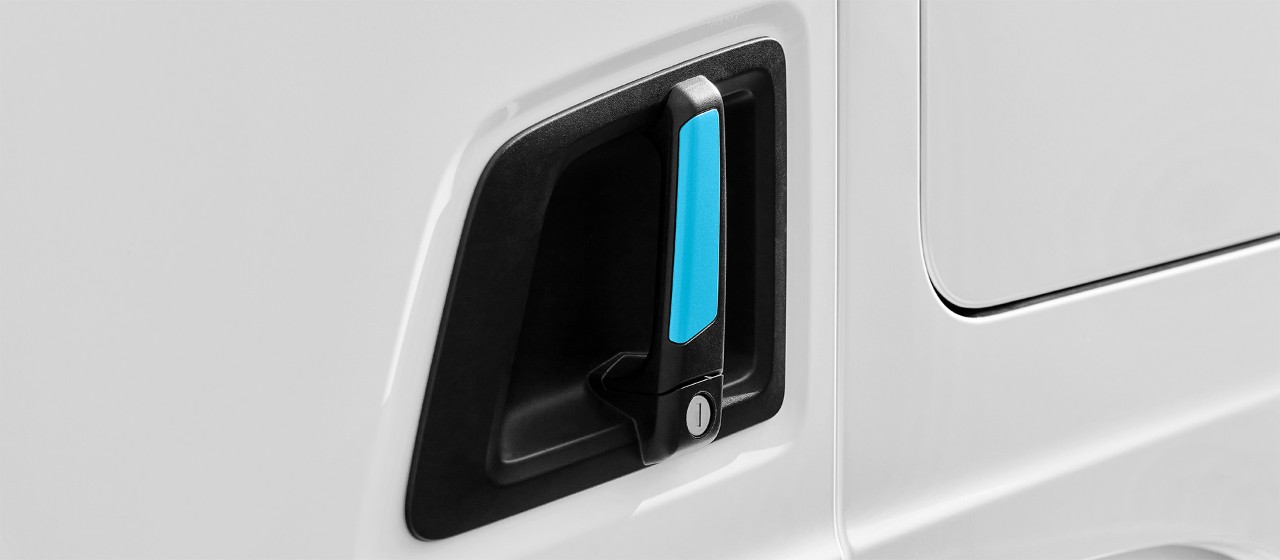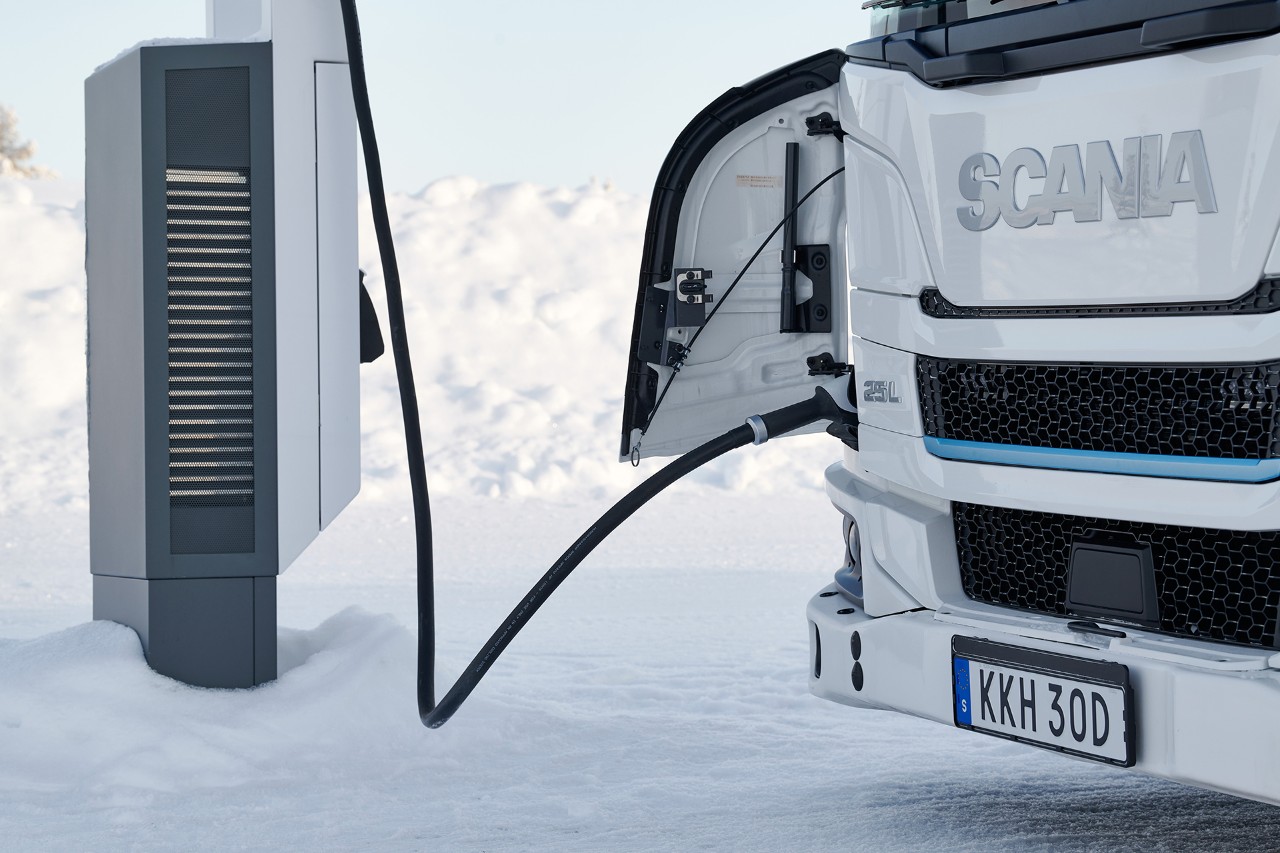
E-mobility school: 25 terms you need to know about truck electrification
Electrification is revolutionising the transport industry, promising a more sustainable and efficient future. As haulage companies and drivers adapt to this new era, understanding the key terminology is crucial. Here’s a comprehensive guide to the essential terms you need to know.
Battery capacity: This refers to the amount of electric energy that a battery can store and deliver to power the vehicle. Battery capacity is typically measured in kilowatt-hours (kWh). The installed battery capacities of Scania’s electric trucks are 416 kWh and 624 kWh.
Battery Electric Vehicle (BEV): A vehicle powered entirely by batteries and electric machines, with no internal combustion engine (ICE).
Battery electric truck.
Battery cell: The basic unit of a lithium-ion battery that exerts electric energy by charging and discharging. Made by inserting cathode, anode, separator and electrolyte into an aluminium case.
Battery chemistry: The battery chemistry used in BEVs includes Nickel Manganese Cobalt Oxide (NMC), Lithium Iron Phosphate (LFP) and Nickel Cobalt Aluminum Oxide (NCA). Scania trucks use NMC, which is known for its good balance of energy density, power and lifespan. Compared to LFP, NMC provides a higher energy density, meaning it can store more energy for a given size or weight, making it the ideal battery chemistry for longer-range BEVs.
Battery life: The life expectancy of a battery estimated through analysis of a truck’s specific operation. Scania’s batteries have the capacity to power trucks for 1.3 million kilometres – equivalent to the truck’s whole lifetime. Even after reaching the end of their life in the vehicle, batteries can still provide significant value and be reused, repurposed and recycled.
Battery Management System (BMS): Monitors and manages battery charging health, ensuring safety, longevity and optimal performance.
Battery module: Each individual battery cell is assembled into a larger frame containing multiple battery cells, which are called a battery module.
Battery pack: Composed of modules, a cooling system and a battery management system that oversees both battery control and protection systems. Typically, each BEV truck has two to four battery packs, optimised for the customer’s vehicle and its intended operation.
Battery pack.
Charging infrastructure: Charging stations where electric trucks can recharge their batteries. Includes public charging, depot charging as well as charging at logistics hubs (destination charging). To provide easy access to public truck charge points, no matter who is operating them, Scania has introduced the service Scania Charging Access.
Charge Point Operator (CPO): Complementing conventional gas station chains, new and specialised CPOs have emerged for electric vehicles. CPOs are pivotal players in electric mobility, responsible for building, installing and maintaining electric vehicle charging stations.
Charging power: The power used to recharge a battery, typically measured in kilowatts (kW). Scania’s batteries have a superior charging capacity and are capable of accepting 375kW charging power, the highest possible rate presently available on the market (and which is the CCS2 standard). With just one hour’s charging, you can add 280 kilometres of range. Scania’s batteries are also prepared for the upcoming ultra-fast Megawatt Charging System (MCS).
Electric powertrain: The components in an electric vehicle that deliver power from the battery to the wheels. Between batteries and wheels, Scania’s BEV powertrain includes the following components: power inverter/converter, electric machine, gearbox, propeller shaft, differential and axles, regenerative braking, and digital management and control. The powertrain of a BEV is significantly more energy-efficient than a combustion engine.
Energy consumption: The BEV equivalent of fuel consumption for diesel trucks. Measured in kWh/km.
Energy density: The amount of energy stored in a battery relative to its weight. Higher energy density means longer ranges for electric trucks, for the same battery weight.
Grid capacity: The ability of the electricity grid to supply power for charging multiple electric trucks simultaneously, a critical factor in large-scale adoption of electrification. Potential bottlenecks mean that haulage companies and CPOs need to secure enough grid capacity from their energy supplier.
Life-cycle emissions: The total emissions of carbon dioxide produced over a vehicle’s lifetime, from manufacture and operation to disposal. Electric trucks aim to minimise these compared to combustion engine vehicles. According to a Scania study, an electric truck outperforms a diesel truck in climate impact within as little as one year of operation.
Power rating: The equivalent of horsepower for an electric machine. Scania’s three electric machines come with power ratings between 210 and 450 kW.
Range: The distance an electric truck can travel on a single charge. This varies based on battery capacity, load, driving conditions, speed. At present, Scania’s BEVs have up to 520 km range at 29 t GTW, 440 km range at 40 t Gross Train Weight (GTW), and 320 km range at 64 t GTW.
Regenerative braking: A technology that recovers energy usually lost during braking and converts it back into stored energy in the battery.
Smart charging: Charging systems that optimise energy use, costs and grid load, often integrating them with renewable energy sources.
State of Charge (SoC): This refers to the level of charge in a battery relative to its capacity, expressed as a percentage. Essentially, SoC indicates how much energy is left in the battery at any given time. SoC is usually represented as a percentage, where 100 percent means the battery is fully charged, and 0 percent means it is completely discharged. For example, if a battery has a state of charge of 50 percent, it means that half of its total energy capacity is available for use.
Thermal management: Systems used to maintain optimal battery temperatures, crucial for preserving battery life and performance. Scania’s thermal management system includes heat exchangers and a heat pump for the most efficient transfer of available heat energy from the ambient air and from available losses emitted from the electric machine, batteries and auxiliaries. This reduces the need to ‘steal’ energy from the batteries to generate heat and cool the batteries, cab and powertrain.
Torque: The rotational force, analogue of a linear force, generated by the engine. Electric trucks provide high torque from a standstill, which enhances performance. Truck drivers trying out an electric truck for the first time often remark upon the supreme torque and direct response of a BEV.
Total Operating Economy (TOE): A comprehensive measure of the cost-effectiveness of an electric truck, encompassing factors such as purchase price, energy costs, maintenance, and operational efficiency. It also includes revenue generation, financial subsidies, and incentives such as toll-free road access for electric vehicles. This way, TOE provides a view of the vehicle’s economic performance over its whole lifecycle.
Zero-Emissions Vehicle (ZEV): A vehicle that produces no tailpipe emissions, significantly reducing the environmental footprint. BEVs are an example of a Zero-Emissions Vehicle.
Read more

Charging
We help you find the right charging solution for your specific need.
